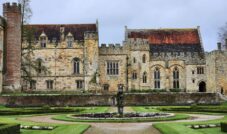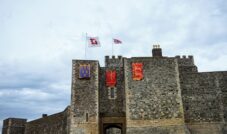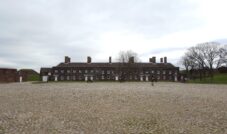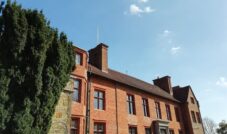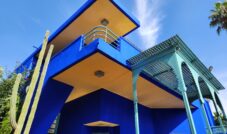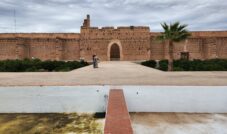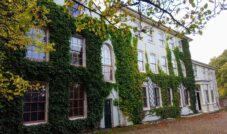My Photos of Palm House












History of the Palm House
Commissioned by the Belfast Botanic and Horticultural Society in 1839, the Palm House was designed by architect Charles Lanyon and built by Dublin ironmaster Richard Turner, who later created the iconic glasshouses at Kew and Glasnevin. Completed in 1840 with the dome added in 1852, this was one of the world’s earliest curvilinear cast iron greenhouses.
Its construction marked Belfast’s growing industrial prowess and reflected Victorian fascination with exotic plants. Today, it remains a jewel of 19th-century glasshouse architecture — elegant, historic, and thriving with life.
10 Interesting Facts About the Palm House
- The Palm House features a 400-year-old Xanthorrhoea (Australian grass tree), one of its oldest inhabitants.
- It’s one of the earliest examples of a curvilinear cast iron and glass greenhouse globally.
- The central dome was added later to accommodate taller species like the Norfolk Island Pine.
- It successfully cultivated the Victoria Amazonica giant water lily, rare in Ireland at the time.
- The 11-metre globe spear lily once bloomed after waiting 23 years — a horticultural marvel.
- The structure is whitewashed annually to prevent plant scorching, using telescopic sprayers.
- Charles Lanyon, the architect, also designed Queen’s University’s Lanyon Building nearby.
- The Palm House has inspired similar glasshouses, including those in Dublin’s Glasnevin and London’s Kew.
- Botanic Avenue Station and Metro Bus #7 and #8 routes make access easy and scenic.
- The Palm House sits beside the Tropical Ravine and Ulster Museum, forming a cultural triangle.
Things to See and Do at the Palm House
- Explore the Cool Wing
Admire seasonal blooms including begonias, fuchsias, and orchids. Pastel tones, delicate scents, and layered textures define this zone. - Wander Through the Tropical Wing
Experience dense humidity and lush planting, featuring gardenias, peace lilies, and hanging tropical climbers. - Marvel at the Central Dome
Stand beneath towering species like the Norfolk Island Pine. Surrounding benches display succulents, ferns, and sculptural foliage. - Spot Rare and Historic Plants
Look out for the 400-year-old Xanthorrhoea, spear lily, and other unique residents. - Enjoy the Gardens Beyond
Stroll past rose beds, floral avenues, and meandering lawns in the larger Botanic Gardens. - Visit the Tropical Ravine
This neighbouring glasshouse features ancient cycads, banana plants, and a Victorian stumpery. - Discover the Ulster Museum
Located at the garden’s main entrance, it offers natural history exhibits, fine art, and cultural displays. - Join a Guided Tour or Event
Occasional tours and seasonal events highlight the Palm House’s history and horticultural curiosities. - Relax and Recharge
Take a seat on a bench amid birdsong and floral scents. Picnic spots are dotted throughout the gardens. - Walk to Queen’s University
A short walk north leads to Queen’s University’s landmark architecture and student cafés.
Practical Information for Visiting the Palm House
- Location: Botanic Gardens, College Park, Botanic Avenue, Belfast BT7 1LP
- Opening Times:
- Palm House: Daily, 10:00 am – 3:30 pm (last entry 3:15 pm)
- Botanic Gardens: Open until 9:00 pm in summer; reduced hours in winter
- Entry: Free
- Transport:
- Metro Bus routes #7 and #8
- Botanic Railway Station within walking distance
- Accessibility:
- Wheelchair-friendly paths and accessible toilets
- Maps available at entrances
- Food & Facilities:
- Public toilets inside gardens
- Seating areas throughout
- Nearby: Tropical Ravine House, Ulster Museum, Queen’s University Belfast, Rose Garden
- Official Website: Belfast Botanic Gardens – Visit Belfast
Next, read my visit to Giant’s Causeway!


